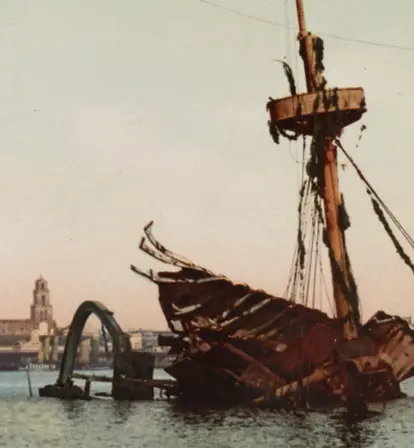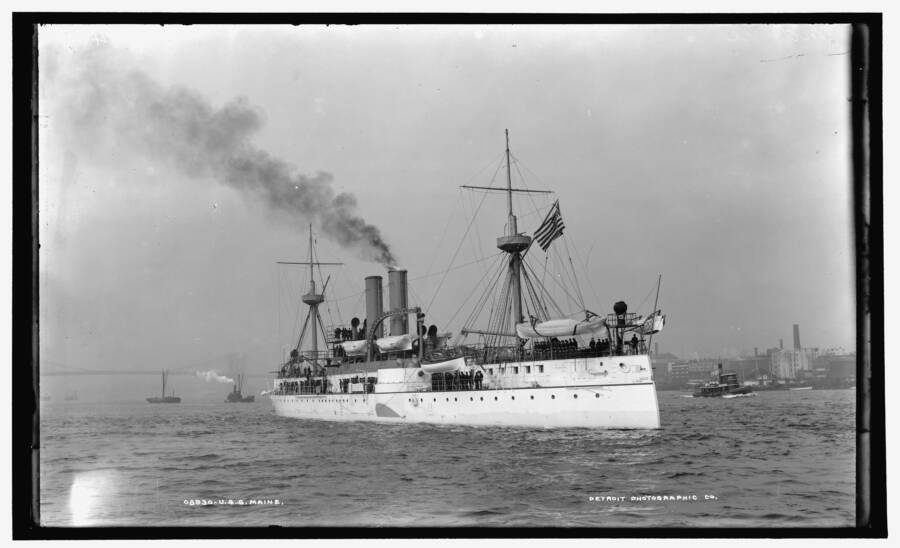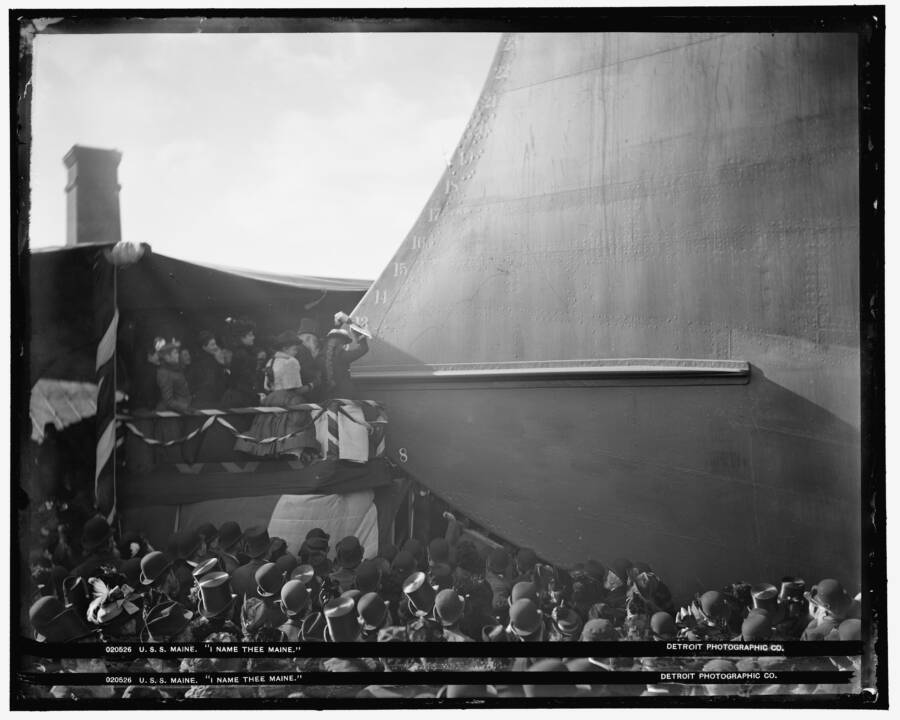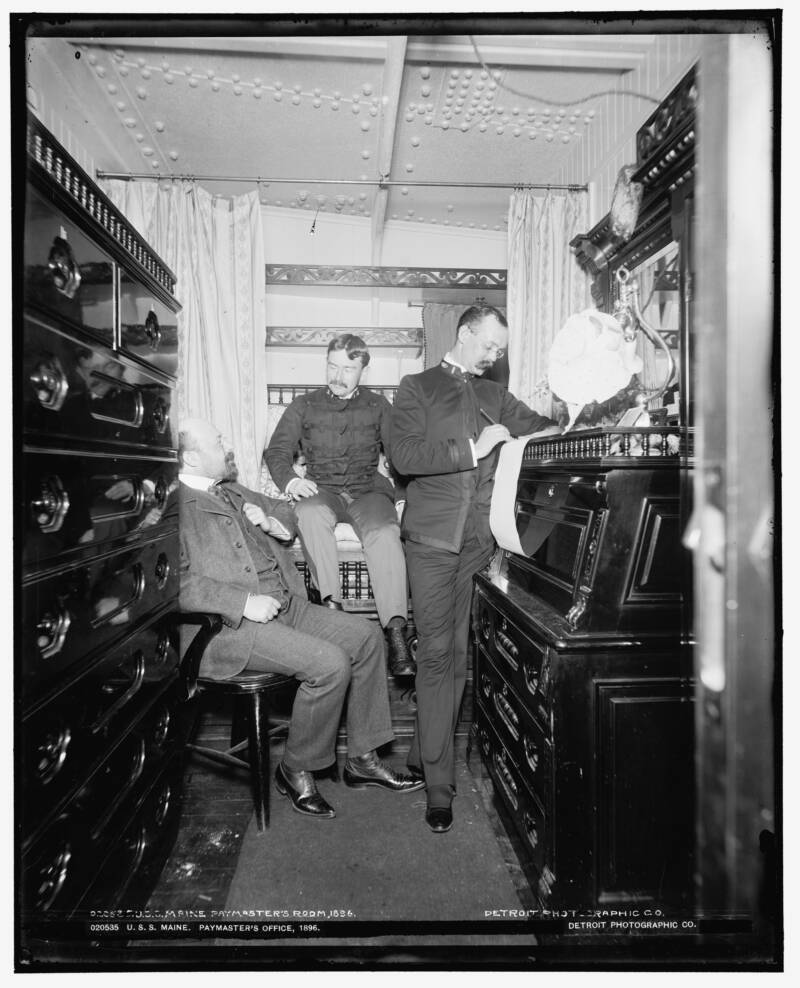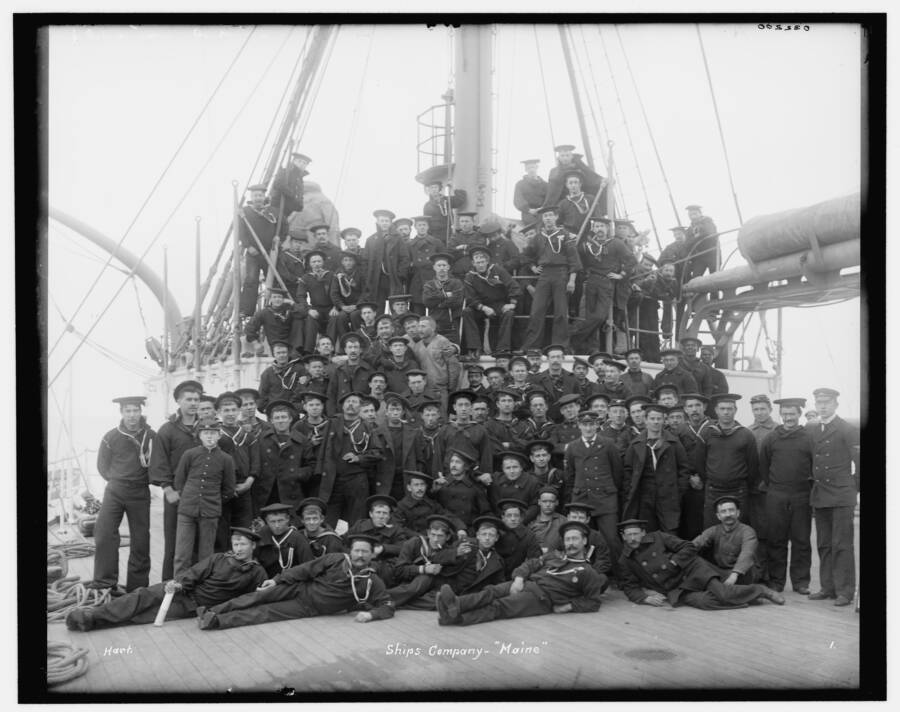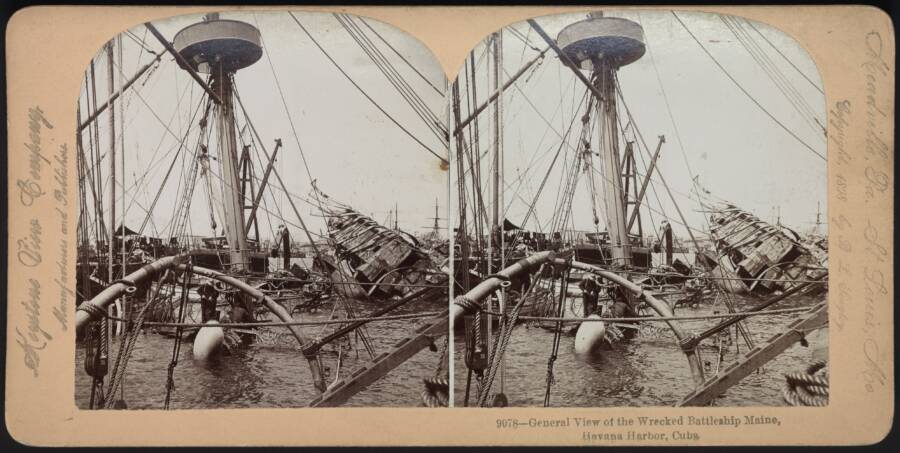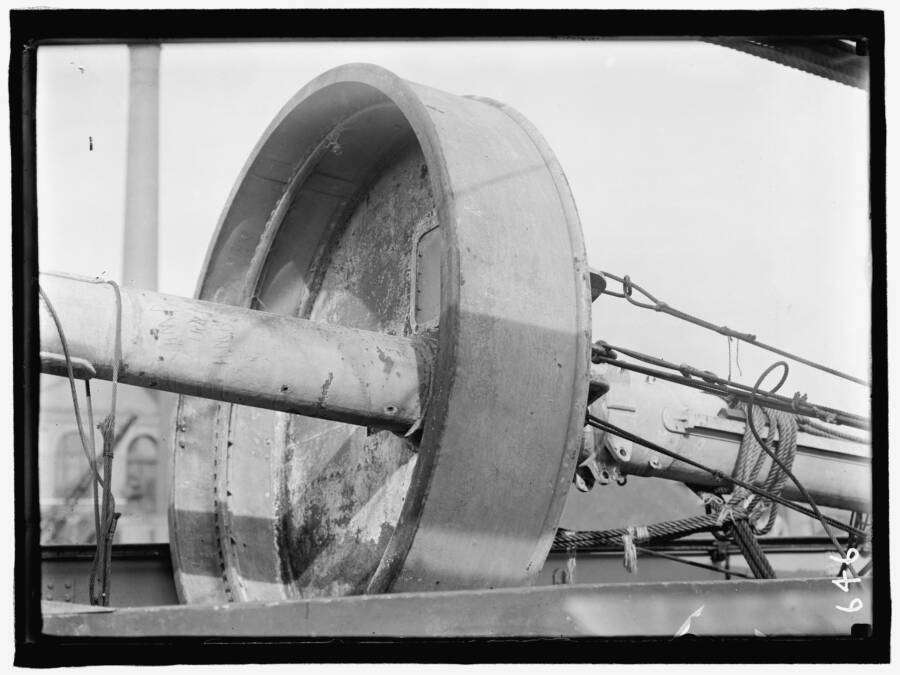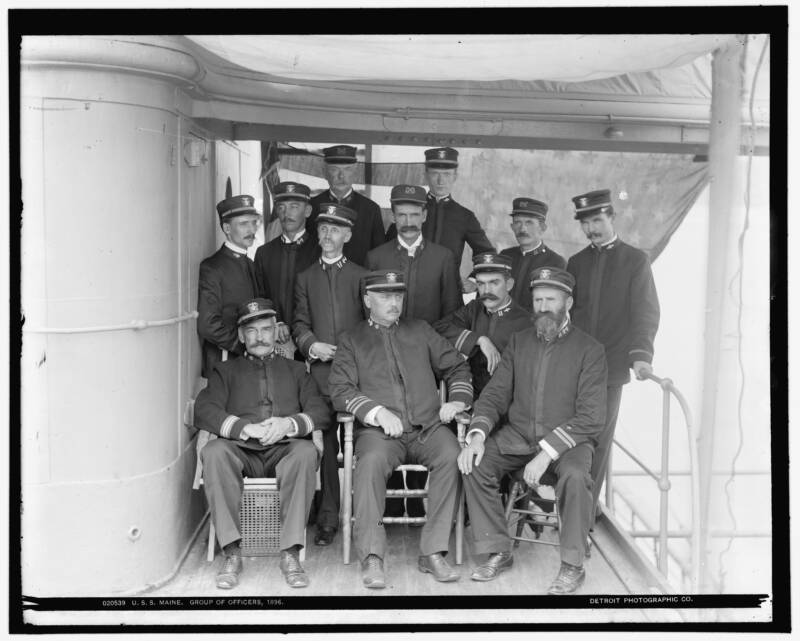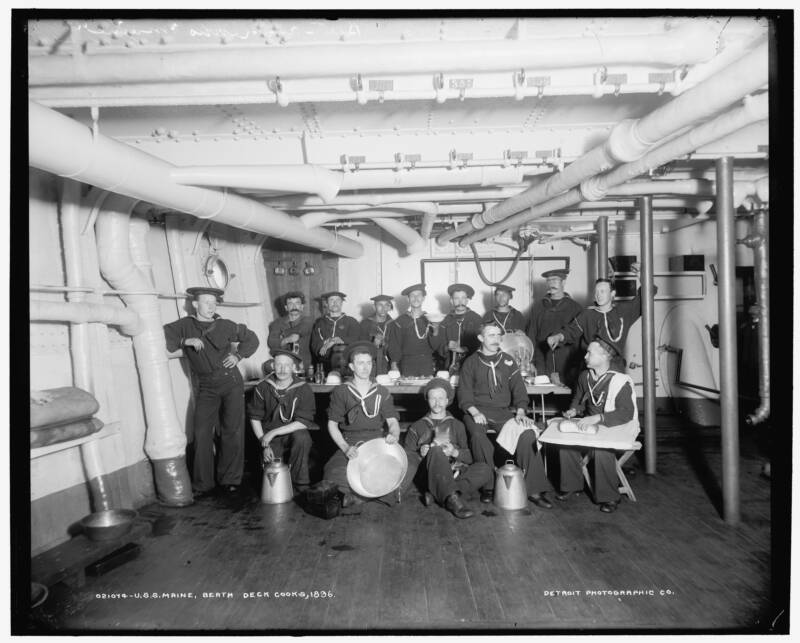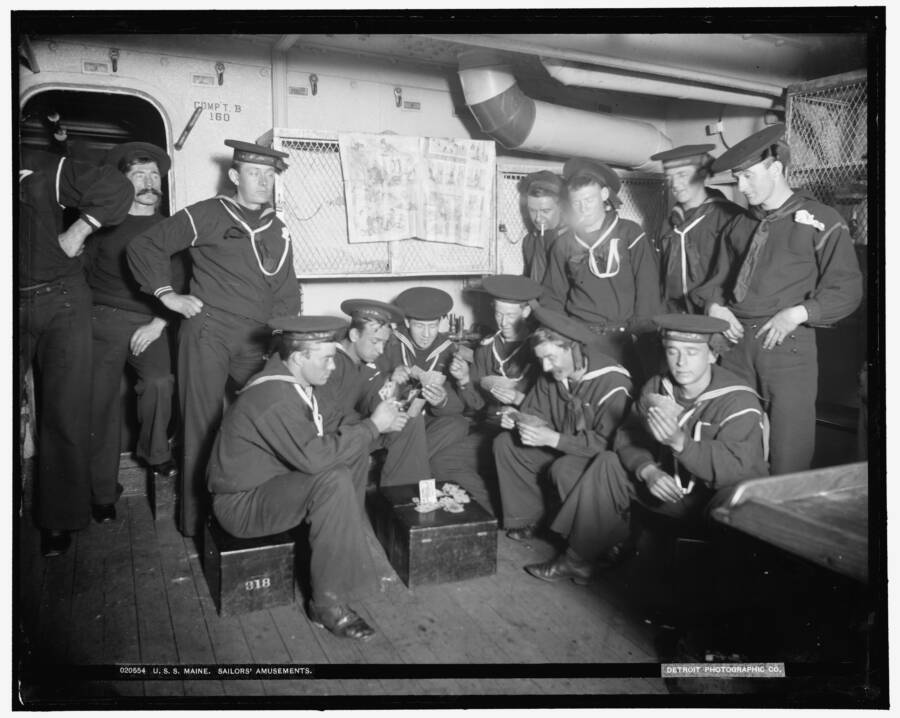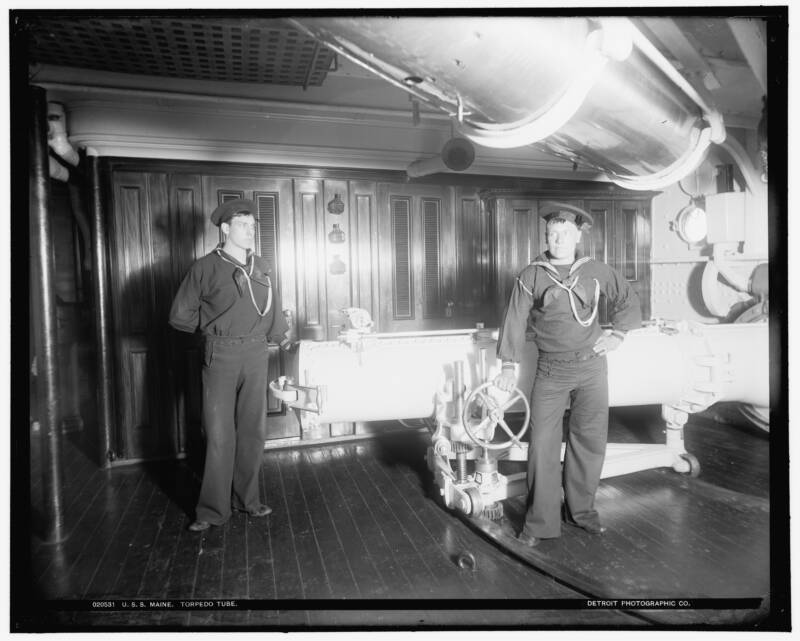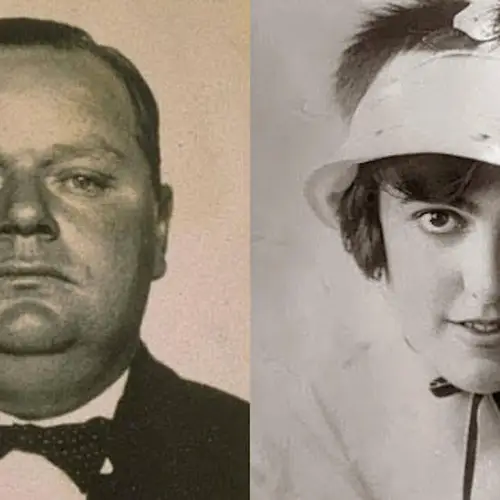The USS Maine exploded in Havana Harbor on February 15, 1898, killing 268 Navy crewmen and sparking the Spanish-American War — but to this day, nobody is sure exactly what happened.
Between April and December 1898, the United States engaged in a brief armed conflict with Spain as the two countries’ prominence on the world stage began to shift.
Known as the Spanish-American War, this period led to substantial change in the Caribbean region as the Spanish Empire’s decline was contrasted by the U.S.’s rapid economic and industrial growth. But there was one event in particular that set this war in motion: the sinking of the USS Maine.
The Maine had been one of the first American battleships. It was docked in the harbor of Havana, Cuba for a supposedly friendly visit amid ongoing revolts by the Cubans against Spanish colonial rule.
Then, it exploded.
An official investigation determined that a submerged mine had destroyed the vessel, and Congress and the American public were quick to point fingers at Spain as the culprit.
However, more recent evidence suggests the explosion may have actually been an accident. And conspiracy theorists have offered up even more sinister explanations for the destruction of the Maine. The question is, what really happened?
How The Fight For Cuban Independence Created Tension Between The U.S. And Spain
The 16th century was a time of great expansion for many European superpowers, though perhaps none more notably than England and Spain. The countries’ westward expansions saw colonizers claiming indigenous lands and committing a litany of atrocities, including rape, genocide, and slavery.
By the 18th and 19th centuries, it was clear that many populations were well and truly fed up with their European colonizers, and they began to fight for their independence.
Per the Library of Congress, the fight found its way to Cuba first in October 1868, when a group of patriotic Cubans attempted to overthrow Spanish power on the island in a conflict known as the Ten Years' War.
Although the Cubans failed to topple Spanish rule, they did at least succeed in putting an end to the old colonial structure of aristocrats and slaves — and theoretically earned themselves representation in the Cortes.
At the same time, Cuba grew more and more economically linked with the United States. The U.S. refined the raw tobacco and sugar grown in Cuba with its industrial technology.
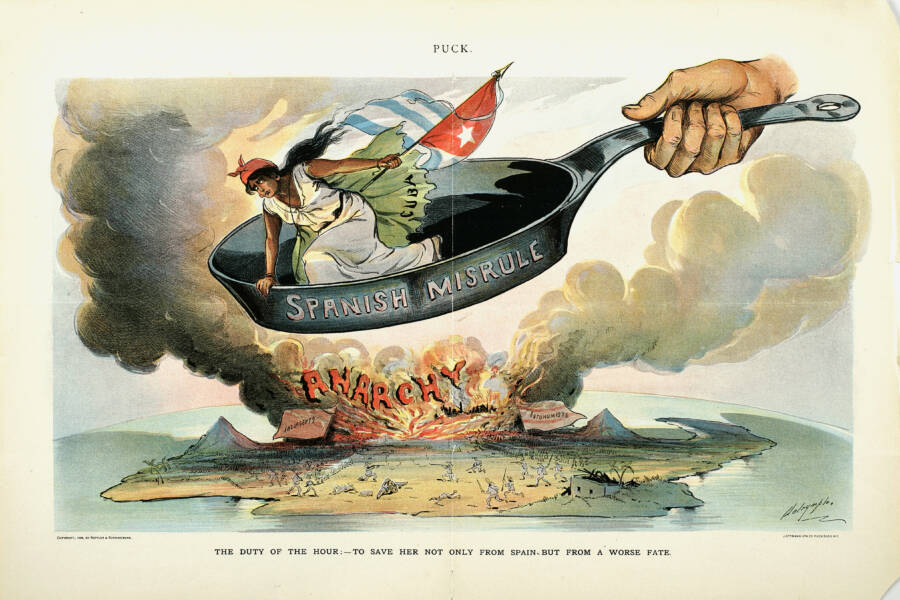
The New York Historical Society/Getty ImagesAmerican propaganda depicting the poor conditions of Cuba under Spanish colonial rule.
Needless to say, the U.S. had a vested interest in Cuba, and it benefited the American government from both an economic and humanitarian standpoint to back Cuba's bid for independence.
So, on Feb. 24, 1895, when Cuban insurgents once again revolted against their Spanish rulers, the first ripples of pressure began to swell for American intervention. Less than three years later, they reached a boiling point.
The Sinking Of The USS Maine Marks The Beginning Of The Spanish-American War
In January 1898, the American battleship USS Maine set sail for Havana, Cuba to observe the country's ongoing conflict and protect American interests. The Maine was one of the first battleships built in the U.S. It weighed in at over 6,000 tons, cost more than $2 million to construct, and carried a crew of just under 400 seamen.
Unfortunately, just a few weeks later, on Feb. 15, most of the crew members on board the Maine were killed when the ship suddenly exploded in Havana Harbor. Then, in March, the United States Naval Court of Inquiry determined that the Maine had been destroyed by a submerged mine — and many fingers pointed to Spain.
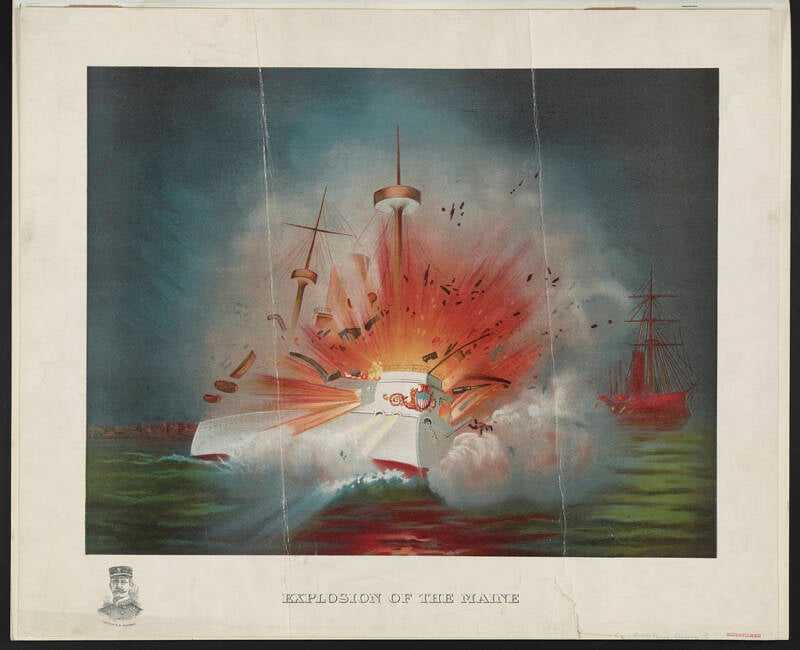
Library of CongressAn illustration depicting the explosion of the USS Maine.
Per the Encyclopedia Britannica, the blast took the lives of at least 260 crew members. Outrage over the event quickly found prominence in the headlines of American newspapers — particularly those of William Randolph Hearst and Joseph Pulitzer. The tycoons specialized in "yellow journalism," which was characterized by highly sensationalized and exaggerated news.
It didn't take long for the papers to land on a slogan that garnered public support for armed intervention: "Remember the 'Maine,' to hell with Spain!" Spain never took responsibility for the explosion, but the damage had been done. In April 1898, the United States declared war on Spain, and thus began the Spanish-American War.
The fighting was decidedly short-lived, with the United States defeating Spain on both the land and sea in less than four months. An armistice was called in August, and the war officially ended on Dec. 10, 1898, when the U.S. and Spain signed the Treaty of Paris. Spain ceded Puerto Rico, Guam, and the Philippines to America, and Cuba ultimately became an independent country.
The acquisition of these territories, of course, had far-reaching consequences, making the catastrophic destruction of the USS Maine one of the most important naval disasters in modern history. Yet, it turns out, it may have been nothing more than an accident.
The Real Cause Of The USS Maine Explosion
The initial investigation of the explosion of the USS Maine was conducted in 1898 by a court of inquiry headed by Captain William T. Sampson. It concluded that the Maine was destroyed when one or more of its forward magazines exploded — and that the source of the explosion had been outside the ship. In other words, the ship had been sabotaged.
According to a 1976 report from U.S. Navy Admiral Hyman Rickover, a second investigation was then conducted in 1911 as the Maine's wreckage was raised. The second inquiry actually contradicted Sampson's original conclusion, but only by asserting that the explosion occurred in a different part of the ship's bow. It still claimed a mine had set off the magazines.

Library of CongressThe wreckage of the Maine in Havana Harbor.
However, Rickover later criticized the earlier inquiries, particularly Sampson's. Sampson's investigation, he said, was largely based on the testimonies of the Maine's crew members and of divers working on the wreckage. Contemporary technical experts who doubted the mine theory were not heeded.
The 1911 investigation was more accurate than Sampson's in that it found the true source of the explosion within the ship. However, Rickover felt the later investigation was too politically motivated when it stood by the conclusion that a mine had triggered the blast.
Rickover and his team ultimately reached their own conclusion: The USS Maine had not been destroyed by a Spanish act of sabotage or a mine, but rather by a spontaneous combustion fire within its ammunition stocks. In other words, it was a complete accident.
The 1976 investigation was, of course, limited in what it could gather, given that nearly a century had passed since the explosion of the USS Maine by then and many primary sources had reached contradictory conclusions. While Rickover and his team's conclusion is plausible, there is no way of knowing for certain if it is entirely accurate.
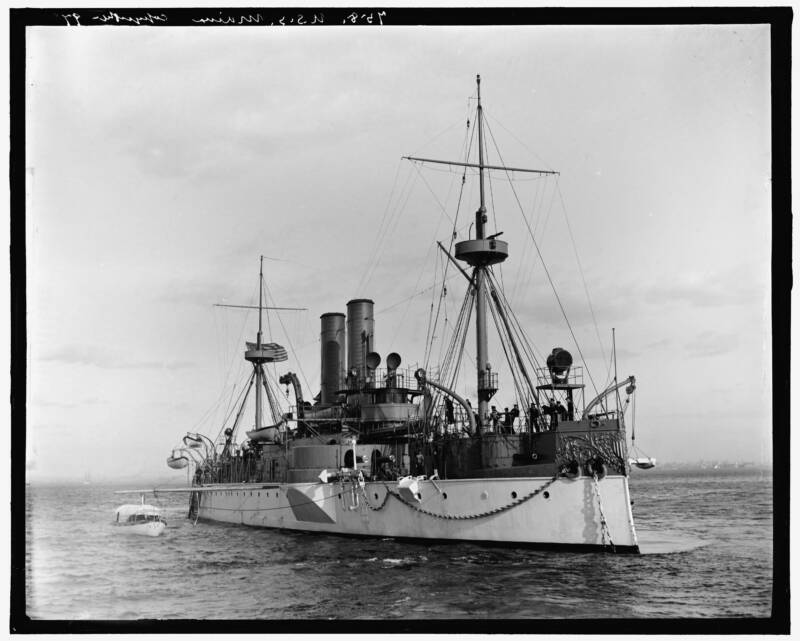
Library of CongressThe American battleship USS Maine in its full glory prior to arriving in Havana.
Then, there are other theories, PBS notes, that suggest William Randolph Hearst himself may have orchestrated the explosion to instigate the war and sell more newspapers. Evidence for this is almost entirely non-existent and limited to conspiracy theory groups, but it goes to show that there is enough speculation about the Maine's destruction to warrant outlandish skepticism.
Whether it was an act of sabotage, an accident, or indeed a stunt to sell newspapers, we may never know for certain. But that does not change the fact that the USS Maine disaster marked a key turning point for a significant portion of the Western world — for better or worse.
After learning about the circumstances surrounding the explosion of the USS Maine, learn the forgotten story of the Sultana explosion — the worst maritime disaster in American history. Then, read about the Halifax explosion, history's worst explosion before nuclear weaponry.
